Related Research Articles

Louis the Pious, also called the Fair and the Debonaire, was King of the Franks and co-emperor with his father, Charlemagne, from 813. He was also King of Aquitaine from 781. As the only surviving son of Charlemagne and Hildegard, he became the sole ruler of the Franks after his father's death in 814, a position that he held until his death except from November 833 to March 834, when he was deposed.
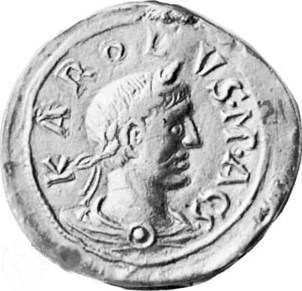
Charles the Fat was the emperor of the Carolingian Empire from 881 to 887. A member of the Carolingian dynasty, Charles was the youngest son of Louis the German and Hemma, and a great-grandson of Charlemagne. He was the last Carolingian emperor of legitimate birth and the last to rule a united kingdom of the Franks.

Italia, also referred to as Roman Italy, was the homeland of the ancient Romans. According to Roman mythology, Italy was the ancestral home promised by Jupiter to Aeneas of Troy and his descendants, Romulus and Remus, who were the founders of Rome. Aside from the legendary accounts, Rome was an Italic city-state that changed its form of government from Kingdom to Republic and then grew within the context of a peninsula dominated by the Gauls, Ligures, Veneti, Camunni and Histri in the North, the Etruscans, Latins, Falisci, Picentes and Umbri tribes in the Centre, and the Iapygian tribes, the Oscan tribes, and Greek colonies in the South.

The Duchy of Swabia was one of the five stem duchies of the medieval German Kingdom. It arose in the 10th century in the southwestern area that had been settled by Alemanni tribes in Late Antiquity.

Saint Paulinus II was a priest, theologian, poet, and one of the most eminent scholars of the Carolingian Renaissance. From 787 to his death, he was the Patriarch of Aquileia in what is now northeastern Italy. He participated in a number of synods which opposed Spanish Adoptionism and promoted both reforms and the adoption of the Filioque into the Nicene Creed. In addition, Paulinus arranged for the peaceful Christianisation of the Avars and the alpine Slavs in the territory of the Aquileian patriarchate. For this, he is also known as the apostle of the Slovenes.
Humfrid was the count of Barcelona, Girona, Empúries, Roussillon, and Narbonne from 858 to 864. He also bore the title margrave of Gothia, as he held several frontier counties.
Odalric, also spelled Odalrih, Odelric, or Udalrich, was the Count of Barcelona, Girona, Roussillon, and Empúries and Margrave of Septimania from 852 to 858.
Eric was the Duke of Friuli from 789 to his death. He was the eldest son of Gerold of Anglachgau and by the marriage of his sister Hildegard the brother-in-law of Charlemagne.
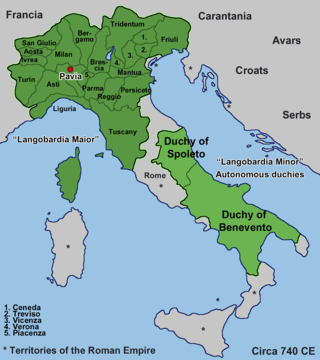
The Duchy of Friuli was a Lombard duchy in present-day Friuli, the first to be established after the conquest of the Italian peninsula in 568. It was one of the largest domains in Langobardia Major and an important buffer between the Lombard kingdom and the Slavs, Avars, and the Byzantine Empire. The original chief city in the province was Roman Aquileia, but the Lombard capital of Friuli was Forum Julii, modern Cividale.

The Marchof Carniola was a southeastern state of the Holy Roman Empire in the High Middle Ages, the predecessor of the Duchy of Carniola. It corresponded roughly to the central Carniolan region of present-day Slovenia. At the time of its creation, the march served as a frontier defense against the Kingdoms of Hungary and Croatia.
Marcarius was the Duke of Friuli from 776 to 787. He was the first Friulian duke appointed by Charlemagne after the rebellion of the Lombard Hrodgaud. He was probably not a Lombard. He played a minor part in the Schism of the Three Chapters.
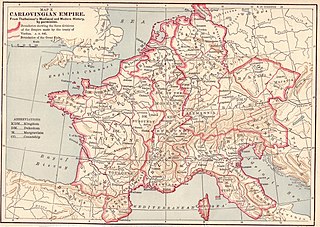
The March of Friuli was a Carolingian frontier march, established in 776 as the continuation of the Lombard Duchy of Friuli, established against the Slavs and Avars. It was ceded to the Duchy of Bavaria as the March of Verona in 952. Its territory comprised parts of modern-day Italy, Slovenia and Croatia.
The Hunfridings or Burchardings (Bouchardids) were a family of probably Alemannic origin who rose to prominence in their homeland, eventually becoming the first ducal dynasty of Swabia. The first known member of the family was Hunfrid, Margrave of Istria and, according to some sources, last Duke of Friuli under Charlemagne from 799. The last member of the clan was Burchard III, Duke of Swabia, who died in 973. Descendants of the dynasty lived on in the female line through the House of Wettin.
Aio or Haio was the probable Duke of Friuli between the death of Eric (799) and the appointment of Cadolah (817). He may have been preceded by another possible duke, Hunfrid, who died circa 808. Though he is not found as a duke in any contemporary or later sources, from his power in the region, he is surmised to have exercised the ducal authority during a period when no other duke is known.
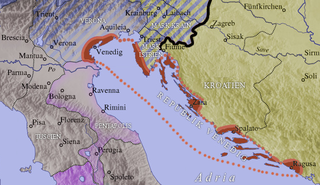
The March of Istria was originally a Carolingian frontier march covering the Istrian peninsula and surrounding territory conquered by Charlemagne's son Pepin of Italy in 789. After 1364, it was the Istrian province of the Habsburg monarchy, the Austrian Empire and Austria-Hungary.
The House of Sponheim or Spanheim was a medieval German noble family, which originated in Rhenish Franconia. They were immediate Counts of Sponheim until 1437 and Dukes of Carinthia from 1122 until 1269. Its cadet branches ruled in the Imperial County of Ortenburg-Neuortenburg and various Sayn-Wittgenstein states until 1806.

The March of Carinthia was a frontier district (march) of the Carolingian Empire created in 889. Before it was a march, it had been a principality or duchy ruled by native-born Slavic princes at first independently and then under Bavarian and subsequently Frankish suzerainty. The realm was divided into counties which, after the succession of the Carinthian duke to the East Frankish throne, were united in the hands of a single authority. When the march of Carinthia was raised into a Duchy in 976, a new Carinthian march was created. It became the later March of Styria.
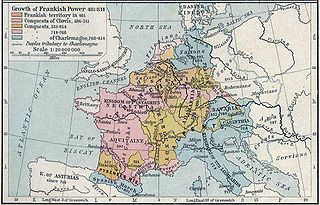
The siege of Trsat was a battle fought over possession of the town of Trsat in Liburnia, near the Croatian–Frankish border. The battle was fought in the autumn of 799 between the defending forces of Dalmatian Croatia under the leadership of Croatian duke Višeslav, and the invading Frankish army of the Carolingian Empire led by Eric of Friuli. The battle was a Croatian victory, and the Frankish commander Eric was killed during the siege.
Rudolf was a Frankish nobleman of the House of Welf, attested as the duke of Rhaetia in 890–892. He probably succeeded his cousin Conrad as duke. He was one of fives sons of Rudolf, count of Ponthieu, and hroudun. He is sometimes numbered Rudolf II to distinguish him from his father.

Raetia Curiensis was an early medieval province in Central Europe, named after the preceding Roman province of Raetia prima which retained its Romansh culture during the Migration Period, while the adjacent territories in the north were largely settled by Alemannic tribes. The administrative capital was Chur in the present Swiss canton of Grisons.